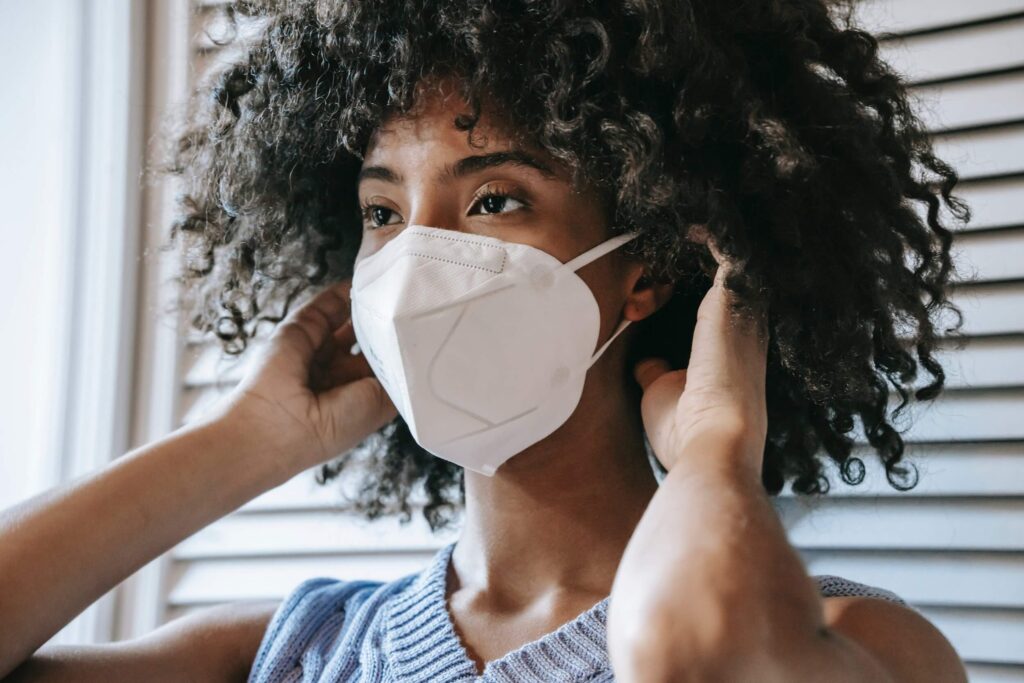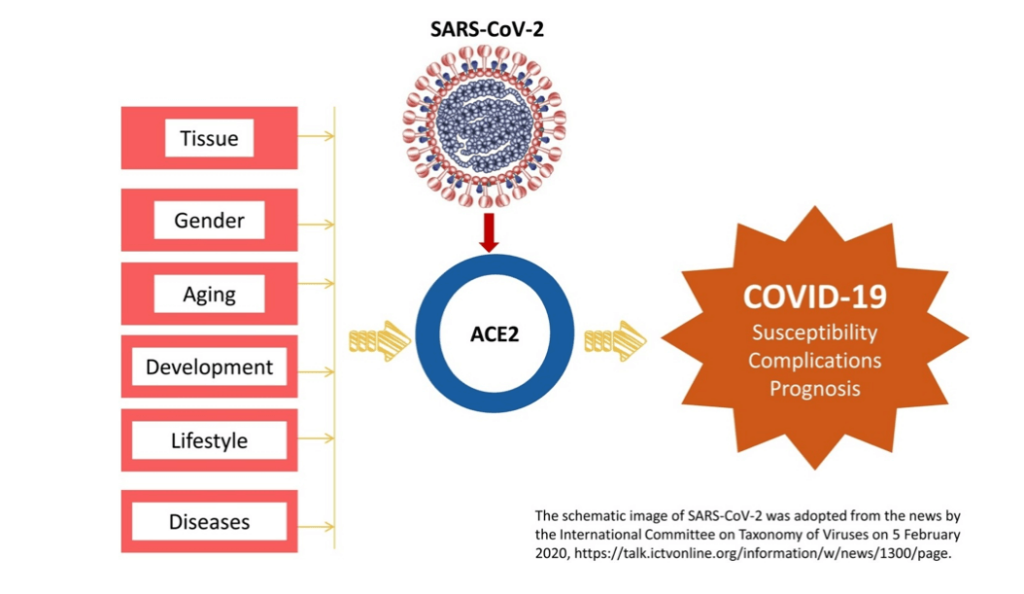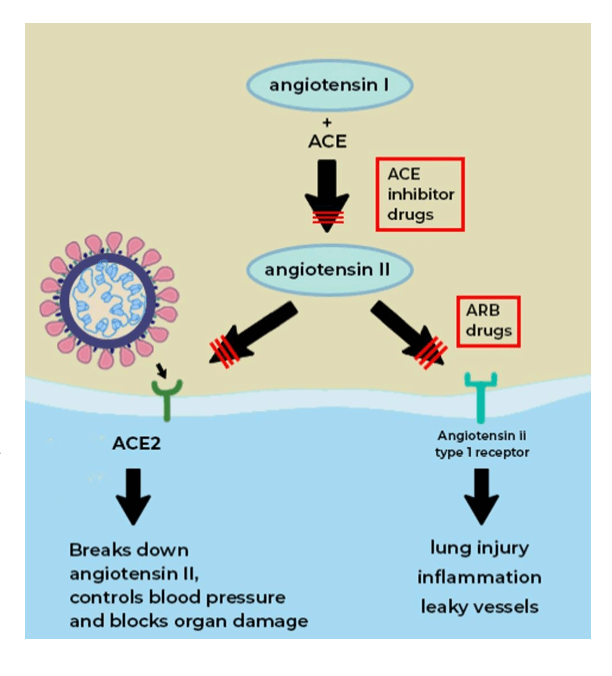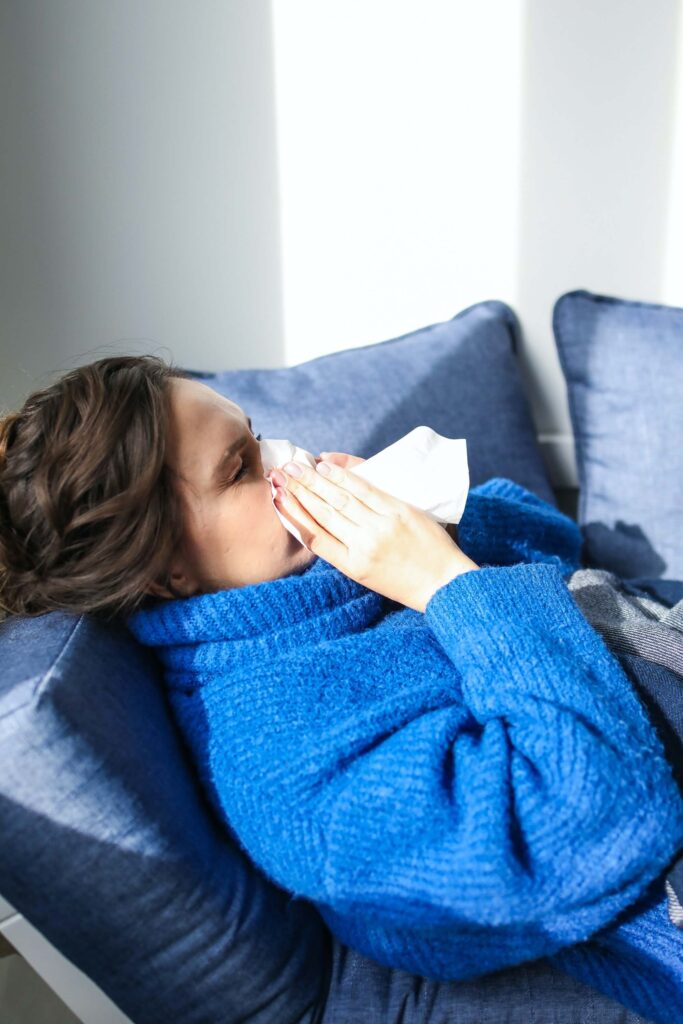ACE2, short for angiotensin-converting enzyme 2, is a protein present on the surface of many cell types, including in the lungs, the heart, blood vessels, the kidneys, the liver and the gastrointestinal tract.
ACE2 can also be found in epithelial cells, which create protective barriers by lining specific tissues. Oxygen (O2) and carbon dioxide (CO2) are swapped between the lungs and blood vessels within this very epithelial lining that is present in the lungs. ACE2 is abundantly found in the lungs on type II pneumocytes, which is a crucial cell mechanism seen in the alveoli, where O2 is absorbed and waste CO2 is released.

Highlights
- ACE2 has currently garnered widespread attention due to the fact that it targets the SARS-CoV-2 virus. This virus binds itself to ACE2 in order to gain access into the cells, particularly in the case of the epithelial lining located within the lungs,
- Pharmaceutical drugs known as angiotensin receptor blockers (or ARBs) are effective in blocking angiotensin II from interacting with its receptor.
ACE2 is an indispensable component in relation to the body’s biochemical pathway (referred to as the renin–angiotensin system, or RAS), which is vital for certain bodily functions like blood pressure regulation and the healing of wounds and cell inflammation. This is how the RAS sustains the homeostasis (or regulation) of blood pressure and maintains the delicate balance between the body’s fluids and salts. Another crucial phenomenon observed is that RAS-induced homeostasis is also vital for stabilizing the physiological and pathological aspects of multiple organs including the heart, the kidneys and the lungs.
ACE2 is also a modulator of the multiple protein activities collectively referred to as angiotensin II (ANG II), which raise the body’s blood pressure and levels of cell inflammation, thereby elevating the injury to the blood-vessel lining and the multiple groups of cells and tissues. It has been seen that ACE2 metabolizes ANG II to other derivative molecules that reverse the effects of ANG II.

ACE2 receptors and COVID-19
ACE2 has currently garnered widespread attention due to the fact that it targets the SARS-CoV-2 virus. This virus binds itself to ACE2 in order to gain access into the cells, particularly in the case of the epithelial lining located within the lungs. Medical research indicates the occurrence of a combination of molecular events that take place in order to enable this virus access, which eventually causes the body’s cells to discard its ACE2 receptors. When this happens, the cells are no longer protected against the excessive activity of ANG II, which in turn opens up the body to pulmonary hypertension, which is often a major complication in people severely affected by the SARS-CoV-2 virus.
Though ACE2 is present in everyone, its volume varies greatly amongst people and in the different cells, tissues and organs. Studies demonstrate that the presence of ACE2 might be higher in individuals with underlying medical conditions such as diabetes, hypertension and coronary heart disease. This has prompted medical professionals to keep a particularly close eye on these conditions and their patients’ medical history while conducting COVID-19 risk assessment.
Researchers have also found that the ACE2 lung-airway expression is elevated and more intense in smokers and those with COPD (chronic obstructive pulmonary disease). This is because the concentration of ACE2 is diminished due to the SARS-CoV-2 virus occupying the receptor sites. This may result in people becoming more acutely prone to the SARS-CoV-2 virus, which elevates the body’s susceptibility in relation to cell death (apoptosis, autophagy, etc.), inflammation and organ failure, principally of the heart and the lungs. Presently, clinical trials are in the process of determining whether ACE inhibitors would be more effective in the treatment of the SARS-CoV-2 virus.

ACE inhibitors and ARBs
The naturally occurring ACE enzyme metabolizes angiotensin I into angiotensin II. The principal role of ACE2 is to break down angiotensin II into the molecules that neutralize angiotensin II’s ill effects. However, if the SARS-CoV-2 virus occupies the ACE2 receptors on the surface of cells, then its capacity for harm is dulled.
Pharmaceutical drugs known as ACE inhibitors particularly inhibit the formation of angiotensin II, which would otherwise interact with the angiotensin type I receptor, which results in the damage and inflammation of tissue and cells. Pharmaceutical drugs known as angiotensin receptor blockers (or ARBs) are effective in blocking angiotensin II from interacting with its receptor.
Angiotensin-metabolizing enzymes (i.e. ACE, also referred to as ACE1) is another protein (i.e., ACE2) which is also present in the body’s tissues, namely, in the heart and the lungs. These particular pharmaceutical drugs, examples of which are enalapril, lisinopril and ramipril, block the functioning of ACE1 but not ACE2. ACE1 steers the creation of ANG II. Thus, we see a Yin and Yang relationship between ACE1 and ACE2, as ACE1 raises the amount of ANG II, while ACE2 in turn decreases the amount of ANG II in the body.
Through the inhibition of ACE1, ACE inhibitors reduce the quantity of ANG II and its capacity to raise blood pressure and increase tissue damage. ACE inhibitors are frequently prescribed to patients that have underlying medical conditions and a history of hypertension, kidney disease and heart failure.
Conclusion
Is there a possible treatment or prophylactic for the SARS-CoV-2 virus?
ARBs, another frequently prescribed class of pharmaceutical drugs (examples of which include valsartan, losartan, etc.), exhibit results similar to ACE inhibitors and could be helpful in treating the SARS-CoV-2 virus.
While there is growing evidence of the defensive function of ACE inhibitors and ARBs in patients afflicted with the virus, there is no concrete evidence to infer that these pharmaceutical drugs can be used in a prophylactic capacity.
Disclaimer: The contents of this article are for general information and educational purposes only. It neither provides any medical advice nor intends to substitute professional medical opinion on the treatment, diagnosis, prevention or alleviation of any disease, disorder or disability. Always consult with your doctor or qualified healthcare professional about your health condition and/or concerns and before undertaking a new healthcare regimen including making any dietary or lifestyle changes.
References
- https://adc.bmj.com/content/archdischild/early/2020/11/30/archdischild-2020-320338.full.pdf
- https://doi.org/10.1016/j.omtm.2020.05.013
https://www.cell.com/molecular-therapy-family/methods/fulltext/S2329-0501(20)30100-5?_returnURL=https%3A%2F%2Flinkinghub.elsevier.com%2Fretrieve%2Fpii%2FS2329050120301005%3Fshowall%3Dtrue - https://doi.org/10.1016/j.phrs.2020.104833, https://www.sciencedirect.com/science/article/pii/S1043661820311415?via%3Dihub.
- https://doi.org/10.1161/CIRCRESAHA.120.317134
https://www.ahajournals.org/doi/10.1161/CIRCRESAHA.120.317134 - https://doi.org/10.1016/j.phrs.2020.104833, https://www.sciencedirect.com/science/article/pii/S1043661820311415?via%3Dihub.








